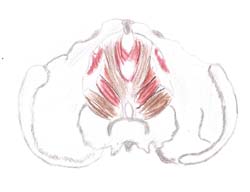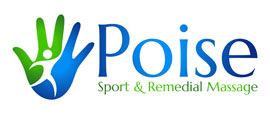Undertake any exercise or activity and you are likely to be asked to ‘engage your core’, told that you have a ‘weak core’, or that a particular exercise is good for ‘strengthening your core’. You might have a hazy idea of where your core is and what they mean, but how clear are you about what your core is and what it does?
What are the Core Muscles?
Your core muscles actually include a lot of muscles that are in three areas – your lumbar spine, pelvis and abdominal region. Specifically this includes:
- Pelvic floor muscles
- Abdominals (Transverse abdominus, internal & external obliques, rectus abdominus)
- Back muscles (multifidus, errector Spinae – Sacrospinalis, back extensors, quadratus lumborum)
- Diaphragm
Of these the pelvic floor and abdominal muscles are the most often referred. Mulit-joint muscles such as the psoas, latissimus dorsi that pass through the core region and the gluteals connection to the pelvis show that associated muscles to this important area of the body are important too.

The pelvic floor muscles are perhaps the more confusing set of muscles to visualise and locate. It is made up of 2 levator ani and 2 coccygeus muscles and their fascia that form a funnel-shaped pelvic diaphragm spanning the inside floor of the pelvis – a diamond shaped area called the perineum. There are 2 layers of soft tissue making up the pelvic floor, deep and superficial, enabling them to support the abdominal and pelvic visera.

The Core Function
The importance of the core muscles for movement in everyday activities and exercise stems from the fact that they act differently to other muscles by the ability to co-contract to enable other muscles to become synergists, that is to increase the action of another muscle. A strong core, therefore, means that muscles can become more than the sum of their individual parts.
So think of any movement you make and the action will be underpinned by your core muscles. Even when you are just sitting or standing, your core muscles are acting to stabilise your body so that it can move in any direction. This particularly important for any sporting activities you may do that involve a lot of twisting movement such as golf, running, tennis or swimming. Even activities such as gardening or household task require a strong core. In, fact it is hard to think of anything you need your body to do that doesn’t require your core muscles.
Having strong core muscles help prevent injuries to the lower back that can be a source of debilitating aches and pain. Weak core muscles can result in poor posture that can affect the whole body and whether it can move freely and without pain.
Exercise for a strong core
Here are some exercises to help you develop a strong core. Please seek medical advice if you have any concerns or conditions that might be affected.
-
Squats
This is good for your lower body as well as your core. Stand with arms out in front and your feet just over shoulder-width apart. Engage your core muscles (it might help you to visualise tightening those muscles in your pelvic floor), breathe in and bend at your knees. Keep your spine in a neutral position as you move down and ease your hips backwards. Go down as far as you can and then return to your starting position.
2. Seated Press-Up
This is good for shoulder injuries as well as core strengthening (make sure you have good strength in your wrists). Sit on a chair (preferably one without arms) and grip the outside edges of the seat. Keep your hands in line with your shoulders. Engage your core to support your spine and push down with your hands to raise your body slightly off the chair. Pause and lower to your seated position.
3. Swiss Ball Roll-Out
This builds both stability and strength in your core by making your lower back and abdominal muscles work together. Kneel down with a swiss ball in front of you and your outstreatched arms resting on the top of the ball. Make sure your back is in a neutral position and your core muscles are engaged for support. Roll the ball forwards by extending your arms and following the movement with your body. Do not over-extend or arch your back. You will need to use your abdominal muscles to roll the ball back to your starting position.
A good pilates class, such as that offered at The Jane Thomas Pilates Centre is an excellent way to strengthen and maintain strong core muscles.
28 January 2016
